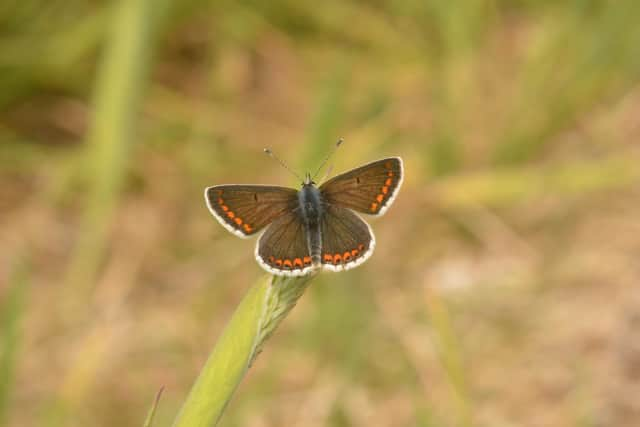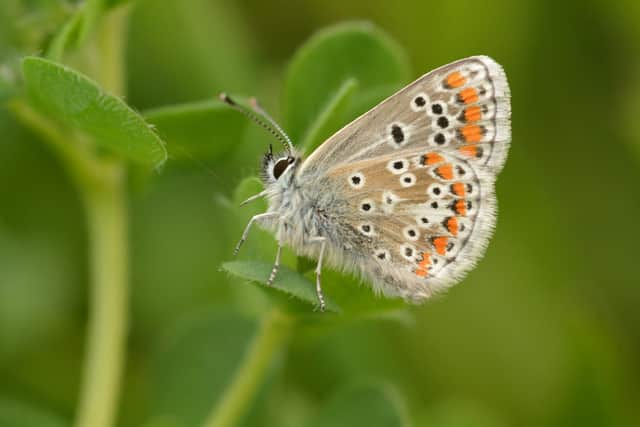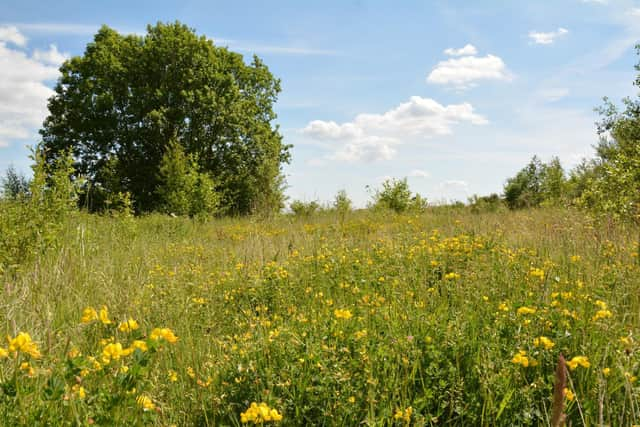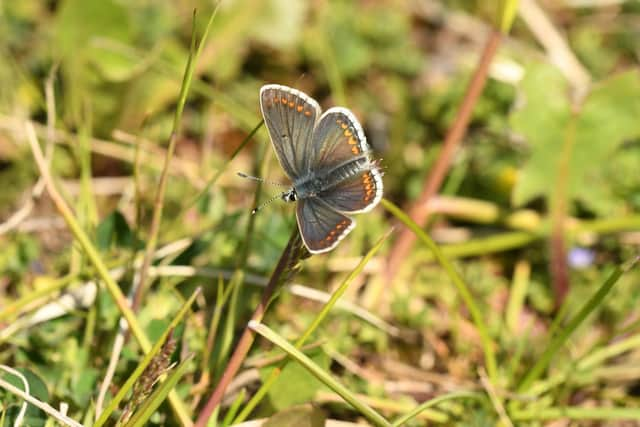Charting the path of the tiny brown argus butterfly as it moves across Yorkshire at a rate of two miles a year
The demise of the brown argus, first sighted in the United Kingdom some 320 years ago, had begun in the early 20th century as its traditional food sources disappeared.
With evolution and climate change it has been granted a swift revival, butterfly experts have said, moving northwards across Yorkshire at a rate of nearly two miles every year.
Advertisement
Hide AdAdvertisement
Hide Ad“That is quite a lot for a tiny little butterfly,” said Dr Martin Partridge, chairman of the Yorkshire branch of the Butterfly Conservation Trust, who has been charting its progress.


“It’s a visible and quick movement that we have seen. It’s probably very good news for the species - but there is a downside to that.
“It’s northern cousin, which comes as far down as County Durham, is starting to overlap. The big question now is will they interbreed, and will the northern one disappear?”
It can be difficult to identify the brown argus, which isn’t as pretty as its cousin the common blue, but a series of tiny dots under its 2.5cm wingspan is what sets it apart.


Advertisement
Hide AdAdvertisement
Hide AdFor centuries it has had a very particular habitat, favouring the rockrose flowers which grow on limestone chalk and are more commonly found in the south east of England.
Early in the 20th century, said Dr Partridge, the butterfly had begun to decline as land was ploughed for farming and the rockrose began to disappear, becoming scarce in the 1980s.
Over the past two decades, however, the butterfly began to feed on a member of the geranium family, which has begun to migrate further north with warmer summers.
The brown argus has now been found colonising in the North York Moors, Dr Partridge said, sharing its trajectory at a meeting this month with the Yorkshire Naturalists’ Society.


Advertisement
Hide AdAdvertisement
Hide AdIt is beginning to flourish at sites around Nosterfield, in Leyburn, he added, within the landscapes of Dalby Forest and across the Yorkshire Wolds.
Charting a path
Dr Partridge, who credits an army of “citizen scientists’”for charting sightings with the Butterfly Conservation Trust, said a detailed picture is emerging of its migration.
Furthermore, he added, the region is home to one of the world’s experts, Prof Chris Thomas from the University of York’s biology department, who is charting the butterfly’s DNA.


“We are very fortunate in British conservation to have data which goes back a long way,” he said. “That is why we can understand its dramatic decline and, more recently, its quite as dramatic move further north.
Advertisement
Hide AdAdvertisement
Hide Ad“What we are seeing now has probably been seen before, thousands of years ago,” he added. “With evolution things can change.
"That is what has happened here, the butterfly has evolved, moving to new places with global warming.
“That has grown, generation on generation, and becomes more prevalent. All of a sudden there were more food plants readily available. It started to move north quite rapidly.”
Migration
The brown argus is first charted as having arrived in Yorkshire in 1983. By last year, revealed Dr Partridge, it had migrated some 71 miles north.


Advertisement
Hide AdAdvertisement
Hide AdThis, he said, is quite a rate of regional expansion, and is close to twice as fast as most other butterfly species.
"Climate change is making a big difference," concluded Dr Partridge.
"A butterfly which had been in serious decline in the UK, with climate change and evolution, has shifted its migration at a great rate - and it's doing very well.
"It has evolved, almost because it has had to."
The Brown argus is not the only butterfly to move further north over recent years, Dr Partridge has said, although the speckled wood and the comma’s migration has not been as dramatic.
Advertisement
Hide AdAdvertisement
Hide AdBefore 1850 the speckled wood was more commonly distributed, but began to decline and by the early 1900s was largely restricted to lowland Wales and South West England.
Its recovery began in the 1920s, appearing in Yorkshire in the 1940s and finally reaching Wetherby in the early 1990s. It is now relatively common all the way up to Scotland.
__________________________________________________________________________________________________________
Support The Yorkshire Post and become a subscriber today. Your subscription will help us to continue to bring quality news to the people of Yorkshire. In return, you'll see fewer ads on site, get free access to our app and receive exclusive members-only offers. Click here to subscribe.